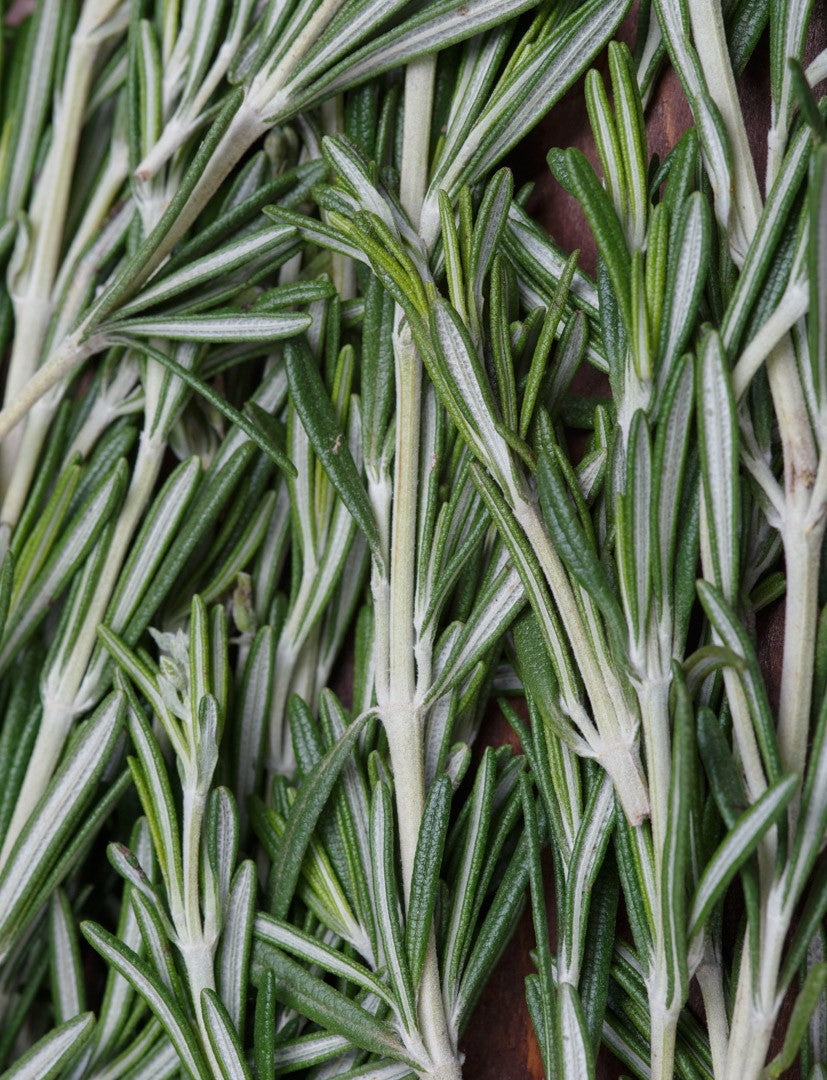
rosemary
INCI: ROSMARINUS OFFICINALIS LEAF EXTRACT / SALVIA ROSMARINUS LEAF EXTRACT
Rosemary extract is made from the leaves of rosemary (Rosmarinus officinalis / Salvia rosmarinus), a typical Mediterranean herb originating in the Mediterranean region, which is considered a very old spice and medicinal plant. Since 2020, rosemary has been one of the sage species (Salvia), a genus of plants within the mint family (Lamiaceae), which is why the older name Rosmarinus officinalis is replaced by Salvia rosmarinus was replaced. Rosemary is therefore, among other things, related to lavender, sage and thyme. When in bloom, the evergreen, needle-like rosemary bush produces blue, purple, pink or white flowers. Rosemary is mainly grown in France, Spain, North Africa and the USA.
Effects
In addition to the essential rosemary oil The leaves of the rosemary bush also contain caffeic acid derivatives, flavonoids and triterpenes. The extract from the leaves is used externally in skin care products as well as internally, e.g. B. used in dragees, tablets or our mouth spray. When used internally, the extract primarily has digestive-stimulating effects. In aromatherapy it is used to calm and combat stress and nervous tension.
Studies
Benincá, J. P., Dalmarco, J. B., Pizzolatti, M. G. & Fröde, T. S. (2011). Analysis of the anti-inflammatory properties of Rosmarinus officinalis L. in mice. Food Chemistry, 124(2), 468–475.
Borges, R. S., Ortiz, B. L. S., Pereira, A. C. M., Keita, H. & Carvalho, J. C. T. (2019). Rosmarinus officinalis essential oil: A review of its phytochemistry, anti-inflammatory activity, and mechanisms of action involved. Journal of Ethnopharmacology, 229, 29–45.
Nazem, F., Farhangi, N. & Neshat-Gharamaleki, M. (2015). Beneficial Effects of Endurance Exercise with Rosmarinus officinalis Labiatae Leaves Extract on Blood Antioxidant Enzyme Activities and Lipid Peroxidation in Streptozotocin-Induced Diabetic Rats. Canadian Journal of Diabetes, 39(3), 229–234.

